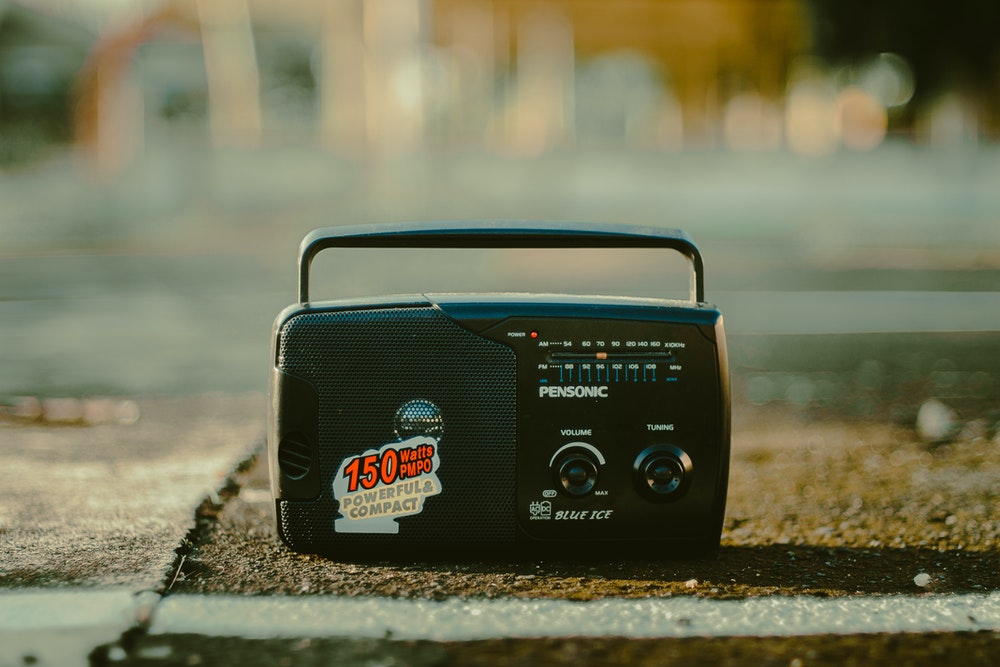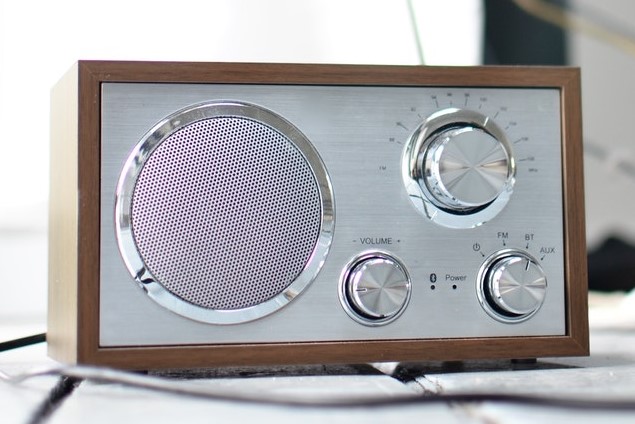Sangam Sharma still remembers the day when she used to wait for the clock to tick 9:15 pm every Tuesday and Friday. This was to listen to her favourite radio programme, Shruti Sambeg, in which famous RJ Achyut Ghimire ‘Bulbul’ recites various Nepali novels and stories in his signature style.
“I was in grade 11 when my elder brother introduced me to this programme,” the 25-year-old shares, “As a literature lover, I was in love with the programmes. And, there was no looking back, until the social media platforms like Facebook took over me.”
Now, Sharma very rarely tunes her once-favourite programme. There are many like Sharma, who have moved out of the radio as the popularity of social media took over.
There was a different charm of radio programmes in Nepal in the 1990s and 2000s. But, with the penetration of the internet and the wide use of social media and online portals, the audience has shifted its attention to online platforms in general. As the significance of radio as a communication technology seems important, they highlight a need for reviving its popularity in Nepal.
Old days vs new days

Nabaraj Budhathoki, the news coordinator at Radio Sagarmatha, South Asia’s first community radio station, remembers the charm of radio programmes was completely different around 15 to 20 years ago. “As social media and the internet facility became accessible to many, the practice of waiting for the programmes has almost become extinct.”
Mainly, the fans switched to YouTube channels and online portals, adds Budhathoki.
Famed RJ Achyut Ghimire observes the same. But, he is not ready to accept that the number of listeners has decreased as the stations have also taken to these new mediums to reach their audience. “After that change in medium, we didn’t recognise them as radio listeners, but internet users. But, in fact, they are listening to the radio over the internet.”
Ghimire claims he still continues to receive several letters about his Shruti Sambeg programme, but it is true that the medium has changed. In the past, they used to come via postal services, but today, they are emailed.
He says within four to five days of uploading any episode, his station’s website records more than 6,000 downloads. Also, while on-airing news on Facebook or website, 5,000-9,000 users join live at once. “So, it can’t be said that the number of listeners has declined.”
Ghamaraj Luitel, a media educator at the Central Department of Journalism and Mass Communication in Tribhuvan University, agrees, “Now, it is not only about sound, but also something that people can watch too.”
Ghimire expresses, “Maybe in overall, 10% listeners might have declined. It has happened due to the emergence of different gadgets. But, that does not apply only to radio listeners. There has been a decline in people playing outdoor games and a lot. But, I had seen a number of listeners during the 2015 earthquake.”
As people can listen to the radio while working on something else, the presence has not been as visible as that of tv or newspaper, he argues.
The old technology in the new age

Likewise, Luitel, who also worked as the station manager at Radio Sagarmatha from 2007 to 2014, shares that even in countries like the USA, around 90% of people still listen to the radio. While walking, working (manually) and driving, they neither can surf the internet nor read or watch anything. In this case, it is the most useful medium as they need something to listen to.
He observes when the radio was born, it was a completely new technology as there was no television. But, gradually, the medium adopted frequency modulation technology, satellite technology and now internet technology, he claims. Radio has also reached social media platforms and also every mobile phone. “The new technologies including the internet have carried the radio along with them. From that perspective, we can say there still is the importance of radio,” says Luitel.
Corroborating Luitel, Nabaraj Budhathoki, the news coordinator at Radio Sagarmatha, says it cannot be said that the radio in the modern age is not significant. Mainly, during natural disasters and political upheavals and in the places where internet facilities have barely reached, it becomes the most heard medium. It was evident in the earthquake of 2015.
Madhu Acharya, CEO/President at Sharecast Initiative Nepal shares the data from a national media survey conducted by his company in February- March 2020 that about 59 per cent of people over the age of 16, or about 10 million people, regularly listen to the radio. In terms of provinces, Karnali has the highest number of listeners at 75% and Madhesh has the lowest at 50%.
A joint survey conducted by Sharecast and UNICEF in July 2021, among parents of about 6,500 households with children under the age of 18 in 77 districts of the country found that 77% of them were regular radio listeners. The same survey found that 62% watched TV, 48% watched online news portals and only 12% read newspapers.
The need for updating
While Nepal’s geography and literacy rates have favoured radio technology over other mediums, stakeholders also agree that the sector needs updates in terms of programmes and technology.
Budhathoki says, “ If we still depend on the transmitter or frequency modulation system, reviving its popularity seems very difficult. The sector needs to update it as per the changing time; it needs to make use of social media platforms and go online. Only then, it can survive for a long time.”

There have been massive changes in the ways of entertainment and information; analysing this trend, the radio should be able to adapt to that change. It now needs to focus on specific issues, be it health or sports or any other genre, says Luitel.
Acharya also shares similar views, “As there are many alternatives, listeners are not obliged to listen to it at present. With mobile and internet access for music, access to social media for news as well as online portals skyrocketing, it is important to invest in the strengths of the medium, which has not happened much in the last 10 to 12 years.”
He further adds stations, producers, and enthusiasts should invest in creative programmes other than songs, music, phone-ins or news that cannot be accessed by other means.
Need for a strong support system
In the 1990s and 2000s, the radio stations mushroomed across Nepal, but there has not been that much advertisement or support for it right now. Also, there has been a lack of expertise and skilled human resources to run the programmes in many formats nowadays. “There has been a lack of journalistic practice. There are not enough facilities and salaries for the journalists. This has made the industry unstable,” Luitel lists the problems.
Luitel says that both the newsroom and production room have become weak. Gradually, the economic sources of the radio have become weaker.
There are more than 800 radio stations registered across the country. However, only a few of them run from advertisements. The majority of these stations run from the share of the changing investors.
Stakeholders accuse the government of haphazardly distributing licences giving a rise to an array of problems. Also, existing policies are not clear enough to operate the stations, according to them.
Recently amended National Broadcasting Directives has some provisions regarding taxation, and it can be a relief for the sector as of now, as per Luitel. He says the government needs to clarify all these confusions.
“Local governments can issue radio licences now, but I don’t think local bodies have that capability/expertise to grant licences. This kind of provision should be amended,” he views, “The operators also should understand that there is the need of refinement in them.”
The post Radio’s heyday is gone, but stakeholders stress reviving its popularity in Nepal appeared first on OnlineKhabar English News.
Comments
Post a Comment